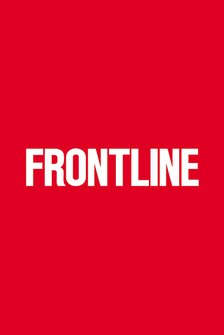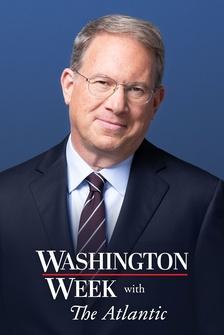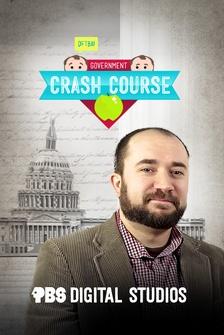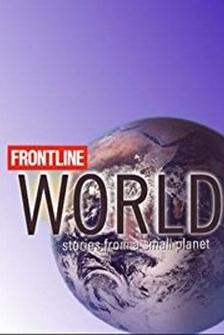- How will the Biden administration fight COVID-19?
This week on Firing Line.
- Science has to rule the day here.
Science is what got us to the moon, it eradicated smallpox.
- [Margaret] As the director of the Center for Infectious Disease and Research Policy, Dr. Michael Osterholm has been warning about pandemics for years, earning him the nickname, Bad News Mike.
- It's random pandemic.
We will basically see I believe a collapse in the global economy as we know it.
- [Margaret] Now, he's a vocal member of president elect Joe Biden's coronavirus task force.
- What we have to do is avoid a train derailment or for that matter, a train wreck before we get to the end of the tunnel.
- [Margaret] With the health care system under siege, a new strain of the virus already here and vaccine distribution way behind schedule, what does Dr. Michael Osterholm say now?
- [Narrator] Firing Line with Margaret Hoover is made possible in part by The Margaret and Daniel Loeb Foundation, Robert Granieri, Charles R. Schwab, The David Tepper Charitable Foundation Inc, The Fairweather Foundation and by corporate funding is provided by Stephens Inc. - Dr. Michael Osterholm, welcome to Firing Line.
- Thank you.
- We are at the start of a new year.
More than 350,000 Americans have died from coronavirus, Back during Thanksgiving, you said that we were probably at the bottom of the third or the top of the fourth inning of the pandemic.
Where does that put us now?
- Well, first of all, let me just say I believe we're in a place that we've never been before, at least not in modern public health history.
We have a pandemic that is taking some very ugly turns with the emergence of this new variant virus.
At the same time, we're trying to roll out a vaccine that is without a doubt, the most complicated vaccination program on a national level we've ever done just by the very nature of how this vaccine has to be kept in terms of its refrigeration and freezing, also a two dose regimen.
And we're surely in a race against the virus right now.
So to answer the question of what inning are we in right now, I would say that it's unclear at this point, it's really unclear.
Maybe we're still in the bottom of the third, top of the fourth but we could have some very, very long innings between now and what I pray tell one day will be a successful ninth inning.
- So tell me last Sunday, the TSA screened 1.3 million travelers who were traveling through airports across the country.
And it was the busiest day of travel during the pandemic.
What will be the impact of that behavior, Dr. Osterholm?
- To have that many people travel means that we also have what I call pandemniesia.
It's pandemic amnesia.
Why do people not understand this potential threat that's occurring and when you bring people in close settings like airports, even traveling in cars, some just need to go to family get togethers that will include people from multiple households, why can you not understand that that's a substantial risk of developing this infection?
We're at a point, I think in this country, where pandemic fatigue, pandemic anger, the pandemic amnesia has taken over.
So the worst thing I could have hoped for or imagined is what we saw with the Christmas holiday travel situation.
- Now, are you confident that because of the holiday travel, there will be further spikes?
- At this point, it's very likely that the Christmas holiday season will cause spikes particularly in some areas of the country where we're already seeing case numbers increasing.
What I'm really concerned about right now is that those travel-related increases are gonna be real.
But what I think is going to be overwhelming in the next few months will be the number of cases that likely will be associated with these new virus variants or transmission is enhanced anywhere from 30 to 70%.
I don't think that the public yet understands what we're likely up against.
I think that's what to me really is what the future is going to be all about over the course, at least for the next several months.
- Well, I'd like to ask you about these new strains of the virus, starting with the UK strain that has been detected in at least five of our states here in the United States.
How widespread actually do you think this variant is in the United States right now?
- I don't think any of us know but as a betting man, I would not be surprised if we're already in 25 states and spreading widely in at least a few of those states.
- And do we not know because we're not sequencing the virus as frequently as other countries?
- We have had a terribly inadequate system put in place to be routinely sequencing samples across the country in a way that would give us a good reading on just how many of these variants might be showing up.
We're working on that.
The new administration is clearly committed to enhancing that surveillance substantially.
But in the meantime, you can feel confident, it's here already.
We've learned just in the past day of an increased number of these variants being found in Southern California.
And the other thing is, don't be surprised if in the next few days we find our own US variant.
What caused that variant to emerge in the UK or the one in South Africa or the one in Nigeria is likely happening in countries all around the world.
And I think before it's all said and done, we may have a number of these variants, the potential for enhanced transmission that will be an extremely major challenge for us from a public health standpoint.
- Wait, Dr. Osterholm, you said this new variant of the virus is in as many as 25 states?
- Oh, I think it's at least that, yes, but let just make a very definitive statement that it will be in all 50 states and the district of Columbia before long.
This virus is going to travel around the world just as the original SAR-CoV-2 virus spread from the Wuhan area to around the world.
So this is not a matter of if, this is just a matter of when, where and how much.
- Tell me about the race between individ doctors getting the vaccine in people's arms and the mutations of the virus.
- Well, fortunately at this time, all the evidence would support that the vaccines and the protection that they afford us still works against these new strains of the virus that we're seeing.
We're going to have to monitor that very, very closely.
And one of our worst nightmares would be if we started to see the mutations actually compromise, somehow reduce the protection that the immune response some of these vaccines affords us.
Again, I want to emphasize, we don't have that evidence right now.
So the home situation really boils down to we're in this race between how many people we can get vaccinated before how many people get infected.
And that's why now more than ever, getting vaccine out as quickly as possible to as many people around the world, not just the United States but around the world is such an important issue.
I think the stakes were raised substantially just in the past few weeks with the emergence of these variant virus strains.
- I think it's really important.
I've been reading your material and listening to your material very closely, but for an untuned ear, for the PBS audience who may not be as attuned to what it means that we have these new strains, are you saying that you are more worried about these new strains, and if so, why?
Well, in a terminology that I guess the average citizen might use, if one said, "Am I worried about this?"
My answer would be, "No.
Hell no, I'm scared."
And I think that that should give people a sense of just how much we in public health understand what these new variants represent.
What we're seeing in terms of transmission, number of cases, loads on our healthcare systems in those areas where this variant has taken off, it is frightening.
I don't have any reason to imagine why this variant is just suddenly going to go away.
It is already starting to spread around the world.
We have at least 38 countries now where those variant has been found.
Within countries, one week they will find 1 to 2% of their samples positive for this variant.
Three weeks later, it can be 30, 40% and soon, 50 to 70% of all the cases have this variant as the virus causing their infection.
So it is a very concerning, very troubling situation.
And at this point we don't have evidence yet that there is more severe illness, just increased number of cases, which by themselves are what overrun healthcare systems.
But I think we even have to be careful about assuming that there isn't more severe illness because one of the risk factors that we clearly have identified for increased risk of severe disease is having viral loads that are increased, meaning higher virus of numbers in your throats.
And we're already showing that with this variant.
So I think over the course of the next year- - And this is the UK variant that you're talking about?
- Both the UK variant and the South African variant.
They're both- - Can you clarify 'cause there seems to be evidence or at least reporting that the UK variant, while it may be more contagious is not necessarily more severe.
- Yeah.
- While on the other hand, the South African variant may in fact be more severe and perhaps even resistant to treatment and the vaccine.
- Right.
In terms of clarifying the situation with the two variants, what I'm suggesting that is in England, they really haven't had time yet to fully evaluate whether it's causing more severe illness.
Remember that hospitalization and death are what we call lagging indicators, often occurring two to four weeks after the original infections actually occur.
And most of the activity that England has been hit with has literally occurred from the beginning of December well up through the past week.
And so the early days of transmission would only now be expected to give us those hospitalizations and deaths.
And so I think it's still premature to suggest that the UK variant is not associated with severe illness.
I hope it's not, but it still very well may be.
The evidence in South Africa does support that it does cause more severe illness as well as much higher levels of transmission.
And at this point, while they are different variants, they could act differently.
There's also every reason to believe that there are similarities that could mean that the UK strain could still cause severe illness.
- Is the South African variant here now, Dr Osterholm?
- We have seen less evidence of the South African variant around the world, but like all these viruses, they're very effective at getting around the world.
Look no further than the original SARS-CoV-2 virus that emerged out of China.
So it's just a matter of time before we see these variants.
The only thing that may prevent one variant from becoming more prominently distributed around the world is if another variant beats it out, meaning that you won't be infected by both and one may win over the other in terms of causing infections.
But at this point, we have to assume these variants could be associated with increased transmission as well as more severe disease.
And the thing that would, I think be by far the biggest challenge, is if somehow they minimize the immune protection from our current vaccines.
- I'd like to ask about the vaccine distribution.
Senior citizens in Florida waited in lines outside overnight for first come first serve doses of the COVID-19 vaccine.
US officials plan to administer 20 million vaccine doses by the end of 2020.
But at the beginning of this week, only about 4 million people have been vaccinated.
Why is the rollout going so slowly?
- Well, a month ago, I actually did a podcast which was entitled The Last Mile and the Last Inch.
And despite the very rosy predictions at the time by this administration that we were going to have this smooth and quick and seamless kind of rollout of the vaccine, it was very clear and evident that this was a disaster waiting to happen.
And we spent all this money on Operation Warp Speed, billions and billions of dollars to develop these vaccines and which has been by itself really a Manhattan Project like success.
- Yeah.
- But we didn't cover the last mile and the last inch.
Should be like building this elaborate three mile bridge across this huge gorge, but not having enough money to finish the last 100 feet.
Why did we not invest in the systems in place to administer this vaccine?
The last inch being, why did we not invest our resources into understanding why people will or won't take the vaccine and what we can do to help educate them, provide them the support to know that they should want to take this vaccine?
So none of that was really done.
The state and local health departments have traditionally been the primary organizing effort at a local or a state level to get vaccines out.
In the first set of recommendations for distributing vaccines to healthcare facilities, healthcare workers, which was obviously our high priority and that of covering our long-term care facilities didn't really involve the health departments.
I think the bottom line message or going forward, the success of the US vaccine initiative will be almost completely dependent on the support that state and local health departments get in the very, very, very immediate future to set up the kind of vaccine distribution systems, the kind of large clinics that organized efforts to provide vaccine.
The example you gave in Florida was the challenge of the states not having the kind of financial support to hire the people to be vaccinators, the people to actually work on the kinds of data system so that we can do this work.
So I'm confident that the- - So who's support support do they need?
Is it federal support that is needed, Dr. Osterholm?
- Yes it is.
And in fact, two things.
They need one, a national plan.
How should we be trying to move these vaccines out?
Here's an example.
Every location around the country right now, I don't care if you're in a village of 300 or a city of 3 million, you have one of the vaccines, the Pfizer vaccine that has very strict requirements on how it must be handled in terms of temperature.
If you pull 500 doses of that vaccine out of that deep freeze and you then refrigerate them to use them, you have a very limited time period, a day to once you're starting to administer those vaccines for them to be used.
Well, I go to a hospital, I have 500 doses of vaccine.
I'm anticipating hopefully vaccinating 500 people.
But for whatever reason, I've only vaccinated 390 people by four o'clock.
I'm now sitting there with 110 doses saying, "Oh my God, I don't want to waste this.
What am I going to do?"
So that's why we've had all these examples of people scrambling to go provide vaccine to people in the community at the last minute.
Well, we should've seen this coming.
This is a situation that should have a national response, a national plan.
How should we handle that?
What should we be doing?
Instead, every little community have had to deal with this on their own.
- Who is to blame for us not having had a national plan?
- Well, it's across the entire administration.
I mean, despite many of us trying hard to tell them, "No, no, no.
You need to have these detailed plans, that state and local health departments need to coordinate and then let them work with the medical facilities, let them work with long-term care facilities, let them work with those essential workers, let them work with the people that are being brought in by age," and none of that resource came through.
If you look right now, I mean, with the recent pass legislation that has just been signed into law, none of that $9 billion that was supposed to come to state and local health departments has made it out here yet.
And so these are agencies, by the way, that have already been so stretched to just deal with COVID the way it is.
And so there is no elasticity right now in state and local health departments to do this.
And so we need those resources desperately if we're going to be successful.
- Are you confident that the Biden administration understands the challenges you're describing and will be able to improve vaccine delivery?
- Let me make it very clear that my comments don't represent the Biden administration position.
These are my own comments, but I am confident that through my work with the Advisory Board and watching the transition team and how they've evaluated the problems, who they've talked to at the state and local levels, how they've engaged the state and local health departments and the other partners in this vaccine area that they do get it.
And I am confident that they will use science and they will use good management practices to try to deliver this vaccine as soon as possible.
So I am confident that the challenges we've had to date will change with the new administration.
- Will vaccinated people, Dr. Osterholm, still be able catch and transmit the virus?
- At this point, we don't know if in fact if you're vaccinated, successfully respond to the vaccine, can you still have what we call an asymptomatic infection?
Meaning I still have the virus inside of me.
It grows in my throat.
And despite the fact that I'm vaccinated and it doesn't cause illness, but then can I transmit it to others?
We're still waiting for those data to confirm that.
My hunch is that we're not going to see these individuals who have been vaccinated becoming major sources of transmission to our community but we need to obtain those scientific data.
- I'd like to ask you a question about vaccine development.
This program, of course, Firing Line was hosted by William F. Buckley Jr for 33 years.
And in 1989, William F. Buckley Jr hosted a debate about free market capitalism and competitiveness in America.
And then Congresswoman Pat Schroeder argued for government involvement in research and development against former UN Ambassador Jeane Kirkpatrick.
And I'd like to show you a clip.
Take a look at this.
- So how do we encourage research and development?
That should be an issue for the federal government.
If we don't do it through subsidy, should we do it through the tax code?
When you've got companies- - Of course, those of us who support free market economics believe that the free market works best because it relies on the creative individual.
- We noticed that at the [indistinct].
- [Crowd] [applause] - Now government labs do very well at certain things, but they don't do well with most things.
They don't do as well as private labs in innovation.
- That's right.
- Creativity.
- What you can is and we have done it in medicine, we have done it in distinguished universities such as yours, which gets tremendous federal help.
- Which is a private university, by the way.
She's speaking of Georgetown University.
- But it does get private, I mean, it does get federal funds and then has been the tremendous coalition that's built this country and I want to keep building.
- Thank you both.
- So do I.
- Thank you.
- Okay.
When it comes to vaccines, you say there needs to be a new business model that pair as public money with private pharmaceutical company partnerships and foundation support and guidance.
You have people like the CEO of Pfizer, Albert Bourla who told us on this program that he thought his company was actually able to move faster without having to worry about spending taxpayers money, that he was able to get around red tape because they didn't take R&D money from the government.
Is there some merit to that argument?
- Oh, there's absolutely merit to whatever works best should be what is used.
Now for some of the companies, they would not have been able to take a new startup technology that may or may not have had any financial return written in this business plan for many years to come.
I would even look so far as the fact that when you look at companies like Pfizer, they have benefited from tremendous amount of federal research support.
The whole avenue of vaccine research right now is heavily supported by the US government.
The messenger RNA vaccines did not just somehow come out of thin air.
That was supported for years in terms of their development by the NIH.
When I look at security from a international perspective, one country or the whole world security, we don't know when this next infectious disease age is going to emerge from some potential animal species in some foreign country.
What I think the world is now fully aware of not being prepared to respond to that emerging virus not only costs us lives but look what it does to the economy.
And so to me, I put the security of our country whether it be military security or whether it be public health security in the same boat.
And I think that that's the kind of support that should be there.
Let's not wait until we have the next pandemic before we prepare for it.
In 2017, I wrote a book "Deadliest Enemies: Our War Against Killer Germs".
Chapter 13 was about coronaviruses.
The title was- - I'm about to quote it back to you.
- Okay.
Yeah.
- You called the 2002 SARS and 2012 MERS coronavirus outbreaks, quote, harbingers of things to come.
Is the COVID-19 pandemic what you were warning about or is it just a dress rehearsal for something even worse?
- You know, Margaret, you're good at this.
You're good at this.
[laughs] Okay.
This isn't necessarily the pandemic that I would have predicted coming like this from a coronavirus as it is.
And I have said for the past 10 plus months that also be cautious, this is likely not the big one.
Meaning that an influenza pandemic like 1918 would actually extract a much greater price from our society, more deaths, more younger people dying and economic disruption that would be devastating.
As we now are in this, what I call a new phase of the COVID-19 pandemic, I'm rethinking that if these variants strains actually are transmitted around the world, we see this increased transmission, we see potentially increased severe disease, we see healthcare system is overwhelmed.
We may very well walk away from this one day and saying, "This was the really big one."
And for certain, if in fact this virus is no longer able to be controlled by vaccine related immunity, meaning that it is able to avoid that, there is no question in my mind this is right up there with the big one.
That's the uncertainty that even a few months ago, I hadn't entertained.
- So you thought this wasn't the big one but what you're saying is this could become the big one.
- Yes.
For the first 10 months of this pandemic, I had no reason to think this was going to be the one.
Now with the potential impact of these variant strains of SARS-CoV-2, this could be the big one.
And that's why I say that this scares the hell out of me.
- There's a theory, Dr. Osterholm, that has been in circulation since the beginning of the pandemic, that COVID-19 was engineered in a Wuhan lab.
There's a new article that has been circulating this week in New York Magazine that suggests that it at least might have been the result of a lab accident.
And you have said that there's absolutely no evidence that it was either deliberately or accidentally manufactured in a laboratory.
The World Health Organization has just been blocked by the Chinese government from entering China to research the origins of this virus.
My question for you is, until scientists are allowed to enter China and investigate, can anyone rule out this theory with certainty?
- As I've said from the very beginning, I just have not seen any evidence that supports that this was a man-made virus.
I've been very struck by the fact that the number of animal species, which this virus very readily infects, whether it be canine, felines, mink, pigs, we've seen a wide variety of animals, it makes me think that this could very well have been an animal related virus that moved into humans with this new type of ability to cause illness.
We don't have complete data on what happened in China, when, where.
And I think we need those data to better understand what happened.
So my statement that we don't have any evidence that it was at this point, a man-made virus or laboratory engineered, must be taken in the context I've not seen any evidence that says it's not.
And so I'm still agnostic on it.
And I believe it is a very important issue for us to explore and to try to understand what happened.
- So you wouldn't rule it out at this point.
- At this point, I'm agnostic on it.
As someone who has spent the better part of his career very concerned about biosecurity, I served for nine years on the National Science Advisory Board for Biosecurity in the United States expressing my severe concern about the issue of laboratory releases, accidental or intentional of infectious agents that could cause great harm, I surely have this on my radar.
At the same time, I just want to be honest and say that, while the absence of evidence doesn't mean evidence of absence, at this point, I've just seen no evidence that would support that this was a man-made virus that was either intentionally or unintentionally released.
- Will we ever have evidence without Chinese cooperation?
- We need to have Chinese cooperation.
I would believe that they would want to do that.
So I hope they do provide access to the world's scientific community to be able to look at those.
And if for no other reason, we have to understand how did this emerge, whether there are things that we could have done, should have done that would have been early warning signals if this is a mother nature made event.
If it's not, what are the other safeguards that have to be in place to support that these things don't happen?
But again, I just come back to the really important point, I just still have not seen any evidence that would support that this was a man-made agent with intentional or unintentional efforts to release it.
- They call you quote, Bad News Mike.
[laughs] Can you be Good News Mike and tell us something optimistic about COVID-19?
- We as a scientific community have accomplished in less than a year what I think has been nothing short of a Manhattan like Project outcome.
We do have vaccines right now that are remarkable.
Our hope of course, is that they will continue to be remarkable over time against this virus.
Having said that, I've often said hope is not a strategy.
So I am very, very concerned that we are also at the time of delivering these new vaccines already working on potentially additional vaccines that we may need to use against this virus that if we do see challenges to the immunity induced by these vaccines find even better vaccines that will allow us to get more permanent protection.
So I think the good news is what science has done.
Science has been a currency here that in of itself has demonstrated the power that it represents to do good in our world.
- Dr. Michael Osterholm, thank you for your time on Firing Line.
- Thank you.
- [Narrator] Firing Line with Margaret Hoover is made possible in part by The Margaret and Daniel Loeb Foundation, Robert Granieri, Charles R. Schwab, The David Tepper Charitable Foundation Inc, The Fairweather Foundation and by corporate funding is provided by Stephens Inc. [lively music] - [Announcer] You're watching PBS.








